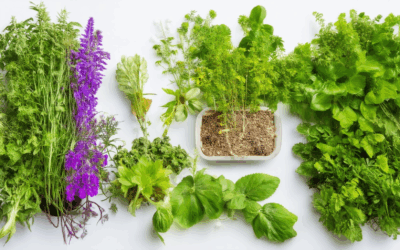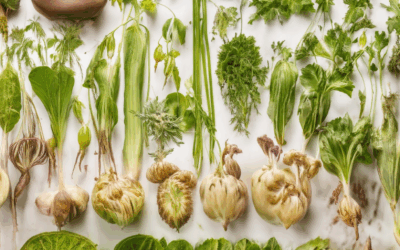Is farm-to-table more sustainable? This question has been buzzing among food enthusiasts, eco-conscious individuals, and even policymakers as the farm-to-table movement gains momentum. While the concept of bringing food directly from the farm to the table seems appealing, its true sustainability depends on various factors, including costs, benefits, and the broader implications of the farm-to-table approach. In this article, we’ll delve into the intricacies of farm-to-table, exploring its definition, principles, and how it operates across different industries. We’ll also examine the economic and environmental impacts, challenges, and opportunities associated with this promising movement. By the end of this exploration, you’ll have a clearer understanding of whether farm-to-table aligns with your values and goals, and how it fits into the larger picture of sustainable food systems.
Key Takeaways
– Supports Local Farmers: Farm-to-table dining directly benefits local growers, ensuring fair compensation and boosting community economies.
– Promotes Sustainability: By using locally sourced ingredients, farm-to-table restaurants reduce carbon footprints and often practice eco-friendly farming methods.
– Fresh and High-Quality Ingredients: Locally sourced foods are fresher, more flavorful, and nutrient-rich, offering healthier options for diners.
– Strengthens Community Ties: Farm-to-table restaurants keep money within local economies, supporting nearby businesses and cultural preservation.
– Educational Opportunities: These restaurants provide insight into sustainable agriculture, inspiring diners to adopt eco-friendly practices.
– Higher Costs and Challenges: While beneficial, farm-to-table comes with higher expenses, supply chain issues, and logistical complexities.
– Limited Menu Variety: Seasonality limits dish options, potentially restricting customer choice.
– Food Waste Risks: Fresh ingredients may lead to waste if not properly managed, complicating sustainability efforts.
– Dependence on Small Farmers: Reliance on small-scale farmers makes the supply chain vulnerable to disruptions.
This section provides a balanced view of the farm-to-table movement, highlighting its benefits while acknowledging its challenges.
Is Farm-to-Table More Sustainable?
The farm-to-table movement emphasizes sustainability by focusing on local food production and reducing environmental impact. Here’s an overview of its sustainability benefits:
- Reduces Carbon Footprint: Local sourcing minimizes transportation emissions, which account for a significant portion of food-related greenhouse gases.
- Minimizes Packaging and Waste: Local farms often use less packaging and waste less food due to shorter supply chains and fresh harvesting practices.
- Supports Land Stewardship: Local farmers may adopt more sustainable land management practices, preserving soil health and biodiversity.
- Encourages Biodiversity: Diverse crop varieties and smaller-scale farming contribute to greater biodiversity compared to large, industrial farms.
Old Seed advocates for sustainable farming practices that align with the farm-to-table philosophy. By supporting local farmers and heirloom varieties, we can help preserve traditional agricultural methods and promote a healthier planet. Explore more resources on sustainable farming at Old Seed .
For further reading on sustainable farming techniques, visit Heirloom Society and Local Harvest for additional insights and resources.
What is the farm-to-table method?
The farm-to-table method is a culinary approach that emphasizes sourcing ingredients directly from local farmers or nearby producers. This practice focuses on sustainability, seasonal availability, and minimizing food miles, ensuring that dishes are fresh, flavorful, and environmentally friendly.
At its core, farm-to-table dining involves:
- Sourcing ingredients locally or organically grown.
- Using seasonal produce to maximize flavor and reduce carbon footprint.
- Establishing relationships with trusted farmers or suppliers.
- Cooking with fresh, just-harvested ingredients for optimal taste and nutrition.
Benefits of farm-to-table:
- Taste: Ingredients are harvested at peak ripeness, ensuring maximum flavor and nutrients.
- Sustainability: Reduces reliance on long-distance transportation and industrial agriculture.
- Economic Impact: Supports local farmers and rural economies.
- Health: Fresh produce often retains more vitamins and minerals compared to stored or imported goods.
Competitors and alternatives to farm-to-table include:
- LocalHarvest : Connects consumers with nearby farmers.
- USDA Organic Program : Certifies sustainable and organic farming practices.
- Eater : Features articles on farm-to-table dining experiences nationwide.
Old Seed supports this method through heirloom gardening resources and sustainable agriculture tips on our website. We encourage everyone to explore farm-to-table dining experiences and contribute to a healthier, more sustainable food system.
How Much Does Farm-to-Table Cost?
Farm-to-table dining offers a culinary experience centered around locally sourced, seasonal ingredients. While the cost can vary depending on several factors, it generally tends to be slightly more expensive than traditional restaurants due to higher ingredient costs and the emphasis on sustainability.
On average, farm-to-table meals may cost 10-30% more than conventional dining options serving similar dishes. This premium accounts for:
- Ingredient Costs: Locally sourced, organic, or heirloom ingredients often command higher prices. Farmers and suppliers may charge a premium for their goods, reflecting the effort and care involved in sustainable practices.
- Supply Chain Logistics: Establishing reliable networks for local produce can increase operational expenses, which may be passed on to consumers.
- Menu Composition: Dishes featuring higher-quality proteins like grass-fed beef or free-range poultry tend to be more expensive. Vegetable dishes, while often cheaper, may still reflect the cost of specialty produce.
- Preparation and Presentation: Gourmet cooking and artistic plating require time and expertise, adding to the overall cost.
However, prices can vary widely based on:
- Restaurant Type: High-end farm-to-table establishments may charge significantly more than casual diners. Cheaper options may still use local ingredients without the premium pricing.
- Menu Items: Dishes with higher protein content or elaborate preparation may cost notably more than vegetable-based options.
- Geographic Location: Urban areas with high demand may see higher prices, while rural areas might offer more affordable farm-to-table experiences.
- Seasonality: Availability and variability of ingredients can affect pricing throughout the year.
For those seeking farm-to-table experiences without breaking the bank, many restaurants offer tasting menus or prix-fixe options, allowing diners to enjoy a multi-course meal at a set price. Additionally, some chefs partner with nearby farms to reduce costs, making farm-to-table dining more accessible.
Is Farm-to-Table Worth It?
Yes, farm-to-table dining offers significant benefits that make it well worth experiencing. Here’s a breakdown of why farm-to-table is valuable:
1. Support Local Farmers
Farm-to-table restaurants source ingredients directly from local growers, ensuring fair compensation for farmers. This support helps sustain small-scale agriculture and keeps money within the community, fostering economic stability for local families.
2. Promotes Sustainability
By prioritizing local produce, farm-to-table restaurants reduce the carbon footprint associated with long-distance transportation. Local farms often employ eco-friendly practices, contributing to a more sustainable food system.
3. Freshness and Quality
Locally sourced ingredients are typically fresher and more flavorful. They retain higher nutrient levels and aren’t subjected to prolonged storage, ensuring dishes are tastier and healthier.
4. Strengthens Community Ties
Eating at farm-to-table establishments keeps money within the local economy, benefiting nearby businesses and services. This circular economy supports cultural preservation and strengthens community bonds.
5. Healthier Options
Locally grown foods may offer more nutrients and fewer synthetic pesticides compared to mass-produced items. This can lead to healthier meal choices for diners.
6. Unique Dining Experiences
Farm-to-table cuisine often offers a more authentic and vibrant dining experience. Dishes crafted from seasonal, regional ingredients reflect the terroir and culinary traditions of the area, providing a memorable meal.
7. Educational Opportunities
Visiting farm-to-table restaurants can educate diners about sustainable agriculture and the importance of supporting local producers. This awareness can inspire individuals to adopt eco-friendly practices in their own lives.
8. Economic Boost
Local restaurants that source farm-to-table ingredients often invest more in their communities, driving growth in sectors like agriculture, food production, and hospitality.
For those interested in learning more about sustainable farming practices, explore our guide to organic farming and discover how you can contribute to a healthier planet.
In conclusion, farm-to-table dining is not just about the food—it’s about the impact. By choosing farm-to-table, you’re investing in your community, the environment, and your health.
Disadvantages of Farm-to-Table
Farm-to-table restaurants offer a unique dining experience focused on locally sourced ingredients and sustainability. While this model has many benefits, it also presents several drawbacks that businesses must consider.
- Higher Costs: Operating a farm-to-table restaurant often involves paying premium prices for local, organic, and seasonal produce. This can lead to increased expenses in sourcing ingredients and processing raw materials into finished dishes.
- Supply Chain Challenges: Relying on local suppliers can sometimes result in inconsistent inventory. Weather conditions, crop failures, or limited production from small-scale farms can disrupt the supply chain, affecting menu availability and customer satisfaction.
- Limited Menu Options: Seasonality plays a significant role in what ingredients are available. This can restrict the variety of dishes offered, potentially limiting customer choice and the overall dining experience.
- Food Waste Concerns: Since ingredients are often sourced fresh and may not always be used entirely before spoiling, there’s a risk of food waste. This can be problematic for businesses aiming to maintain sustainability and reduce environmental impact.
- Logistical Difficulties: Managing the logistics of sourcing, transporting, and storing fresh ingredients can be complex. This requires careful planning and coordination to ensure timely delivery and proper handling.
- Potential for Overpricing: While higher costs for ingredients may necessitate price increases, this could make the restaurant less accessible to budget-conscious diners, potentially limiting customer base and revenue streams.
- Dependence on Small Farmers: Over-reliance on small-scale farmers can make the business vulnerable to market fluctuations and individual farmer issues, such as illness or equipment failure, which can disrupt operations.
Why Are Farm-to-Table Restaurants Expensive?
Farm-to-table restaurants are often more expensive than traditional ones due to several factors:
- Local Sourcing Costs : Locally sourced ingredients can be more expensive because small-scale farmers typically face higher production costs compared to large industrial farms. Additionally, the lack of long-distance transportation reduces handling and storage costs, but the initial production costs remain elevated.
- Seasonality and Availability : Seasonal ingredients mean chefs must adapt menus frequently, limiting variety and potentially increasing prices during off-peak seasons. Supply chain disruptions, such as poor harvests, can further drive up prices.
- Increased Labor Requirements : Smaller, local farms often require more manual labor, increasing operational costs. Chefs also spend more time sourcing ingredients, affecting overall efficiency.
- Sustainability Practices : The use of organic or heirloom varieties, along with eco-friendly methods like composting, adds to costs. These practices enhance quality but increase expenses.
- Supply Chain Inefficiencies : A smaller network leads to challenges in managing shortages or demand spikes, prompting restaurants to purchase in larger quantities, thus raising prices.
- Perception of Quality : Customers are willing to pay more for fresh, high-quality, locally-sourced food, and chefs’ expertise in preparing such ingredients further justifies the higher prices.
These factors collectively make farm-to-table dining a more exclusive and costly experience.








0 Comments